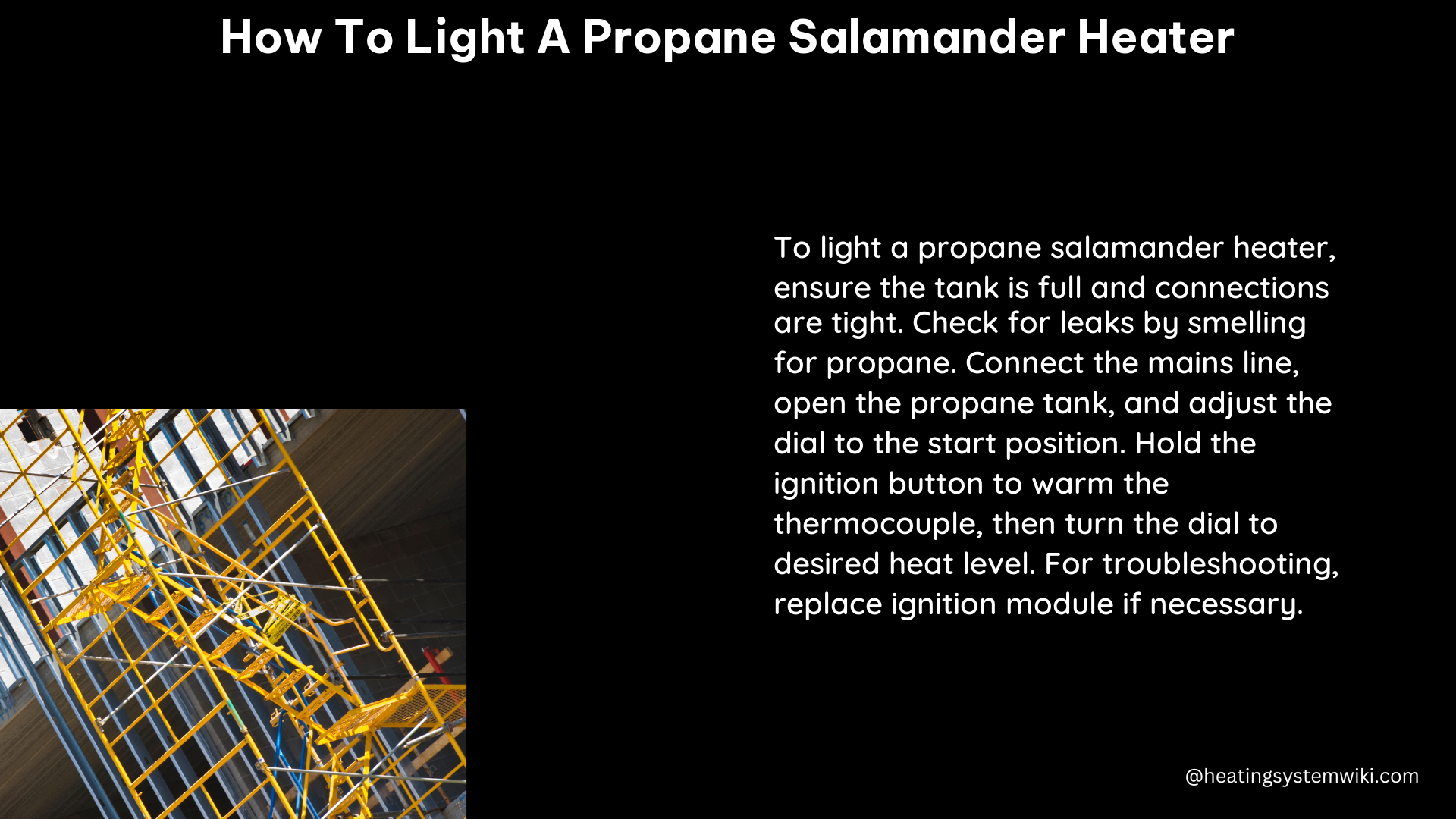Lighting a propane salamander heater can be a straightforward task, but it’s essential to understand the technical specifications and safety precautions to ensure a safe and efficient operation. This comprehensive guide will walk you through the step-by-step process of lighting a propane salamander heater, providing you with the necessary details and tips to make the process a breeze.
Preparing the Propane Salamander Heater
Before attempting to light your propane salamander heater, it’s crucial to ensure that the propane tank is full and properly connected to the heater. Use a leak detection solution, such as soapy water, to check for any leaks at the connections. Look for bubbles forming, which would indicate a leak that needs to be addressed before proceeding.
Lighting the Pilot Light

- Pilot Light Position: Turn the heater’s control knob to the “Pilot” position.
- Igniting the Pilot: Press and hold the pilot button while using a long match or lighter to ignite the pilot light. Continue to hold the button for about 30 seconds after the pilot light is lit to allow the thermocouple to heat up.
- Thermocouple Sensitivity: The thermocouple is a safety device that senses the presence of a flame. It should be sensitive enough to detect the pilot light and send a signal to the gas valve, allowing the gas to flow to the main burner.
Igniting the Main Burner
- Control Knob Position: Slowly turn the control knob to the “On” position while continuing to hold the pilot button.
- Main Burner Ignition: The main burner should ignite once the control knob is in the “On” position.
- Pilot Button Release: Release the pilot button once the main burner is lit.
Technical Specifications
- Propane Pressure: The ideal propane pressure for a salamander heater is between 10 and 15 inches of water column (iwc).
- Thermocouple Sensitivity: The thermocouple should be sensitive enough to detect the presence of a flame and send a signal to the gas valve to open.
- Pilot Light Size: The pilot light should be small enough to burn efficiently and large enough to ignite the main burner.
- Ignition System: Salamander heaters can use either an electronic ignition system or a manual ignition system. Familiarize yourself with the specific ignition system of your heater before attempting to light it.
Troubleshooting Tips
- Pilot Light Won’t Stay Lit: If the pilot light won’t stay lit, the thermocouple may be dirty or damaged. Clean or replace the thermocouple as necessary.
- Main Burner Won’t Light: If the main burner won’t light, ensure that the propane tank is open and that the gas is flowing properly.
- Manufacturer’s Instructions: Always refer to the manufacturer’s instructions for your specific model of propane salamander heater, as the lighting and operating procedures may vary.
Safety Precautions
- Ventilation: Never use a propane heater in a confined space or without proper ventilation.
- Maintenance: Regularly inspect and maintain your propane salamander heater to ensure safe and efficient operation.
By following these detailed instructions and adhering to the technical specifications and safety precautions, you can confidently light your propane salamander heater and enjoy its warmth and convenience. Remember to always prioritize safety and consult the manufacturer’s instructions for your specific model.
References
- “How to Light a Propane Heater” by wikiHow.
- “Propane Heaters: Safety, Types, and Tips” by DoItYourself.com.
- “Salamander Heaters: Uses, Benefits, and Safety Precautions” by Propane101.com.
